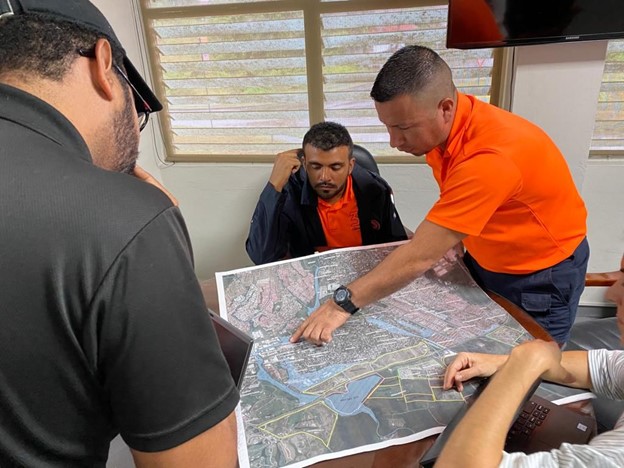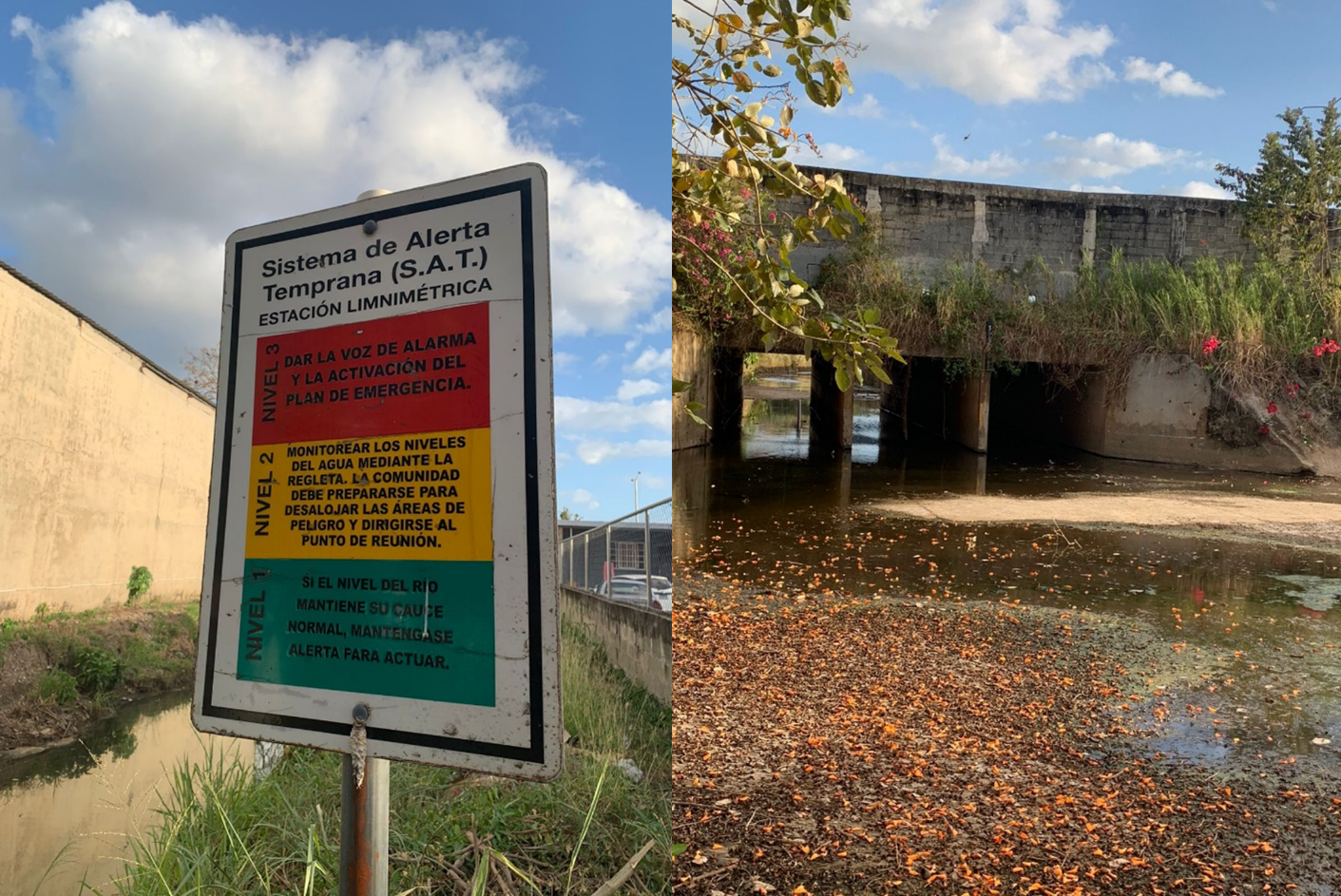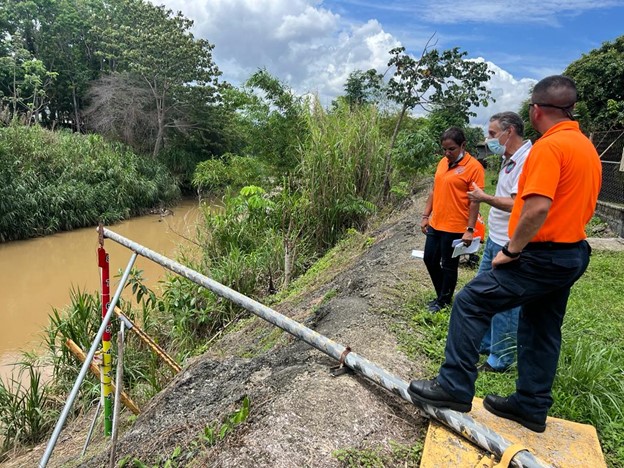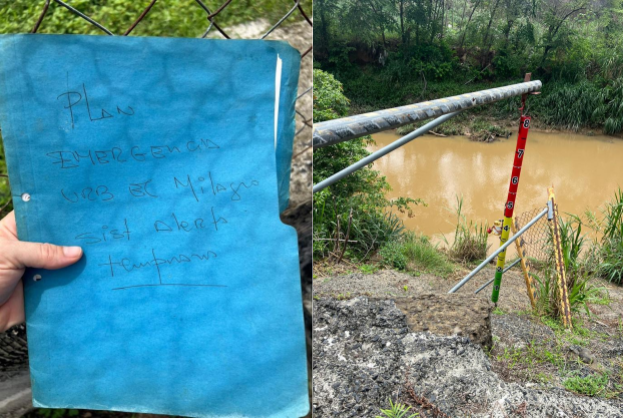Early Warning Systems - How often do you think about what to do in the case of a flood
September 4, 2023
How often do you think about what to do in the case of a flood?
Collective intelligence (and action) to build effective early warning systems from the bottom-up.
Have you ever thought about what to do if you ever find yourself in the event of a flood? For communities that live alongside La Gallinaza creek in Juan Díaz, they do not have to think about it. They live it every year.
For some families in these communities, it is easier to count the times of the year the creek does not flood, than the times it does. There are countless of personal stories on what they have done when this event happens, and communities have creatively designed what they call their ‘artisanal’ early warning systems for floods.
These grassroots systems work very well for the immediate event; however, they are often disconnected or not identified by local governments, institutional responses and the private sector. This lack of integration is a missed opportunity to manage risks and take preventive measures more effectively.
A clear example of this is shown in a 2012 assessment on Early Warning Systems (EWS) (CEPRENADAC, 2012), where only 13% of all systems were considered ‘good’, 80% regular and 7% bad. Of all these systems, 40% do not contemplate or include community participation. The biggest weakness identified by the assessment is the community involvement and adoption of these systems.
More than 10 years later, SINAPROC, the National Civil Protection Agency, acknowledges that the panorama has not changed substantially and that “no matter the level of investment, without community involvement, the results will continue to be -mostly- unsuccessful”. This begs the question. How can we use collective intelligence to design a community-centered early warning system?

Photo 1 – Signposting of evacuation route in the neighborhood of Ciudad Radial, Juan Díaz.
Collective intelligence (and action) requires a lot of humility and questioning about what is considered ‘valid’ knowledge. It is often said that “communities know better”, however, the knowledge of communities can often be seen as anecdotical or not rigorous enough, especially when compared to scientific or academic knowledge in issues related to climate change.
When discussing this with SINAPROC in preparations to build a community emergency plan, it was clear for them: “The community members are the expert. What must happen at the moment of an emergency has to be defined together with community members because they know what they need better than us. I cannot tell you the best evacuation route because I do not live there, but if you ask a community, they will probably see it clearly” – In short, to make a community-based plan, communities and their local knowledge need to be really at the center of its design.

Photo 2 – Preparatory meeting with SINAPROC to learn about existing early warning systems and community emergency plans in the Juan Díaz River basin.
Our previous blog titled “Do you know what it feels like when the rain is coming? Our hearts beat faster.” sheds some light on how communities are already responding and organizing to tackle the effects of floodings and climate change; as well as their awareness on the structural elements that exacerbate the effects of climate change in their communities.

Photo 3 – Early warning system (linnimetric station) in the community of Ciudad Radial, Juan Díaz.
In different workshops and focus groups that we have conducted, it is evident that people in communities often have an articulated and in-depth understanding of the problems they face, and have developed community systems to monitor how creeks and rivers behave, but this knowledge is rarely intentionally recognized in institutional responses.
However, people continue to generate local solutions to face the issue of floods in their communities and it represents a unique opportunity to strengthen social cohesion and the relationship between communities and local institutions.

Photo 4 – (Manuel Huges), community leader from the neighborhood of El Milagro, explaining the grassroots, DIY early warning system developed together with the community.
An example of this type of synergy has been the grassroots early warning system built by the community of El Milagro in Juan Díaz, who has been affected by floodings for decades. The community created a do-it-yourself (DIY) system, inspired by a community leader and engineer that saw an early warning system on YouTube and adapted the model to his community.

Photo 5 – Folder with community emergency plan and DIY early warning system developed by the community.
The community self-organized to do a census of themselves, buy equipment and install devices (sensors, buoy, megaphone and in-house alert bells). They also wrote a community emergency plan together with the support of SINAPROC, and this institution recognizes this grassroots model to be one of the most effective cases of community early warning systems in Panama City.
How many more grassroots efforts like this are we missing? And how much faster and effectively could we respond if we acknowledged these local actions into institutional response plans and protocols? Through this collective intelligence effort, we are articulating the data, knowledge and practices of these local communities, local governments and SINAPROC to bridge the information and response gaps in existing early warning systems in the Juan Díaz River basin. Perhaps, after this process, we will be able to collectively know what to do in the case of a flood – and you won’t have to wonder about that alone.
Wait for our next blog where we will continue to share learnings on how we are iterating spaces to harness the power of community-collective knowledge with data and key actors to better respond and adapt to floods in the Juan Díaz river basin in Panama City.
The UNDP Accelerator Lab in Panama, as part of the Collective Intelligence for the Climate Crisis process conducted a series of ethnographic activities to prototype a human-centric early warning system (EWS) for floodings in the metropolitan area of Panama City with the potential to be replicated or scaled in the country.

 Locations
Locations